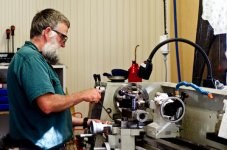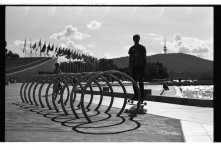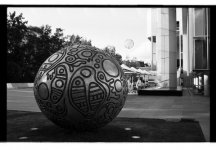...
And there is no point in using very dilute developer as it will have a completely different effect than when using stand development.
And different is necessarily inferior, or "wrong"? There is no point in experimenting; trying something different?
🙁
My experiments have drawn to a halt, temporarily, after the motor in the BBQ rotisserie has burned out! I have a replacement on order (ebay #190517811436, 12v 4rpm) that should be more reliable, I hope!
I did two rolls of PAN-F before the motor failed, one at 30 minutes and one at 60 minutes, with LC29 1+100, 4ml in 400ml). Both are quite usable but the second is definitely more dense overall and does show more contrast. (My enlarger works best with slightly more contrasty negs.) 45 minutes would probably be perfect, or I can experiment with a lower concentration of developer.
While the second roll (Kodak Hawkeye film) was evenly developed, the PAN-F showed some flow marks along the edge against clear sky areas, caused by either the sprocket holes or the frame of the spool. I'm now going to try a different application, with the motor turning the tank end-over-end, just like in normal inversion agitation by hand. This was actually my original plan, but I was diverted to try the Jobo arrangement. Interestingly, a 4 rpm rotation will give me 4 inversions per minute, same as the conventional pattern (as recommended by Ilford), albeit more slowly. There's still a risk that the mechanical rotation will prove to be too regular with no random movements, but I might add some vanes to the spool to encourage it to rotate a bit inside the tank!






